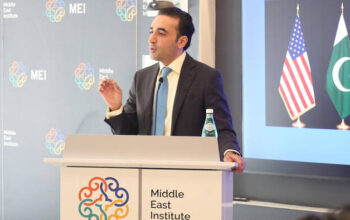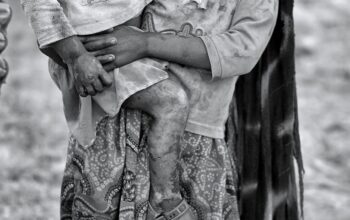By Staff Reporter
ISLAMABAD: When they couldn’t find an exorcist to drive the demons possessing the economy out, some number-crunching wizkid pitched the idea of rebasing the economy to shave some decimals off those hairy figures, which the PTI-led regime’s likely fifth column found quite clever and convinced Imran Khan to go for it.
This and other funeral house cosmetics to make a dying economy look prettier before burial dug Khan’s grave.
This economic parlour trick would only make the deathly numbers look tolerable; it wouldn’t turn the economy around.
After rebasing it from 2005-6 to 2015-16, the size of Pakistan’s economy went up to $387 billion in the outgoing fiscal year 2021-22 against $299 billion in the last fiscal year 2020-21, registering an increase of $88 billion in just one year.
In rupee terms, the size of the GDP at market price climbed up to Rs67 trillion (exactly Rs 66.95 trillion) in the outgoing fiscal year. The nominal Gross Domestic Product (inflation + real GDP growth) went up by 20 percent boosting the GDP in the rupee term. The real GDP growth is projected at 6 percent, while inflation on average at 13.3 percent for the outgoing fiscal year.
The PTI’s epic economic screwup furnished inflation with an ideal environment to thrive to double-digits in its infamous four years of trial-and-error government. Something that never happened in the tenure of its predecessor PMLN government.
The PTI government always hung its clumsy inflation management on higher international prices of fuel and commodities in the aftermath of COVID-19. They even today are in denial.
One of its most glaring failures is its deliberately avoiding making hay when the sun was up. Somebody had the PTI government believe that Pakistan was an industrial nation that would become great after striking world’s largest oil reserves and Reko Diq gold and copper reserves are going to transform Pakistan into an economic powerhouse in one fell swoop. They forgot it’s an agriculture country and the thought of seriously boosting its farm productivity never crossed their messed-up minds. Though curtains were pulled on a number of plans beautifully engraved on shiny marble plaques for photo sessions but never got off the ground.
The country became a net importer of food and other farm commodities despite proudly calling itself an essentially agrarian economy. We spent around $10 billion on imports of wheat, sugar, palm oil, pulses, and cotton in the outgoing fiscal year.
Increase in the size of the economy in terms of rupee will help the government restrict the budget deficit and public debt to GDP size by a few percentage points.
It might not be possible to limit the budget deficit in absolute figures, but the numbers of fiscal deficit in percentage of GDP will be less scary. For instance, the size of the economy was projected to increase from Rs55.8 trillion to Rs 63.8 billion after rebasing national accounts. If based on old rebase the budget deficit would escalate close to 10 percent of GDP. With the new rebasing the size of the economy climbed to Rs67 trillion so the budget deficit will go slightly over 7 percent of GDP till end June 2022.
However, the tax to GDP size will further worsen, while social sector spending in percentage of GDP will also decline.
During the last tenure of PMLN in 2017-18, the size of the economy in dollar terms was $315 billion. During the rule of the PTI-led regime, the size of the economy in dollar terms shrank mainly because of a slowdown of the economy especially in the aftermath of COVID-19 pandemic.
However, the size of the economy jumped at the twilight of the PTI government to $387.1 billion in 2021-22 in April 2022. The GDP growth rebounded to 5.97 percent in the outgoing fiscal year.
A consumption and imports-led growth is toxic.
IMF, the world’s most sought-after fiscal health expert that uses dollar drips to rejuvenate near-default economies, has prescribed demand suppressing pills and advised prevention from expansionary fiscal and monetary policies to stabilise the economy’s vital signs.
That means the country is not breaking out of boom-and-bust cycle it has been trapped in for ages anywhere in the foreseeable future.
Copyright © 2021 Independent Pakistan | All rights reserved




